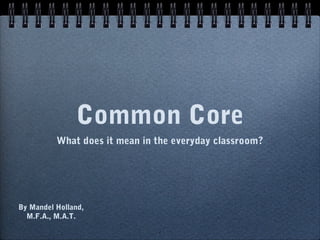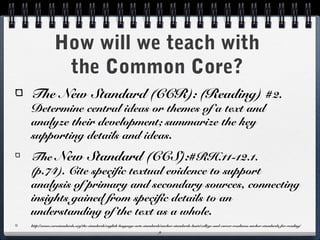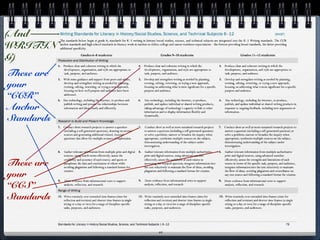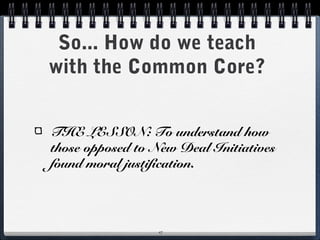The document discusses the implementation of Common Core Standards, which aim to align K-12 education across states to better prepare students for college and careers. It clarifies the distinction between macro (college & career readiness standards) and micro (Common Core standards) while emphasizing that current teaching methods will largely remain the same, adapted to meet new requirements. Detailed examples illustrate how assessments and lessons can be structured around these standards to ensure effective learning outcomes.






























